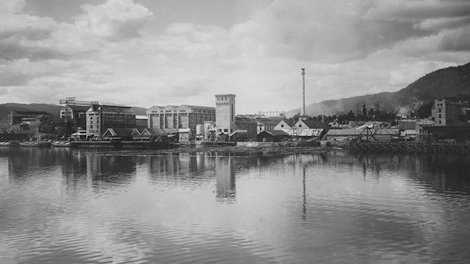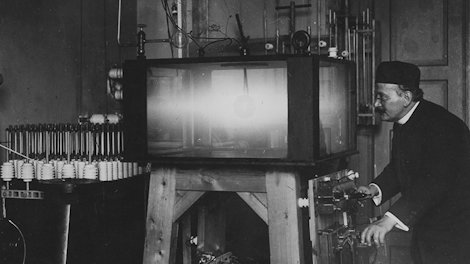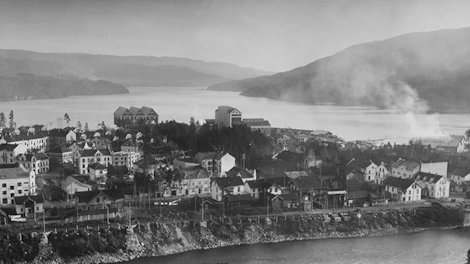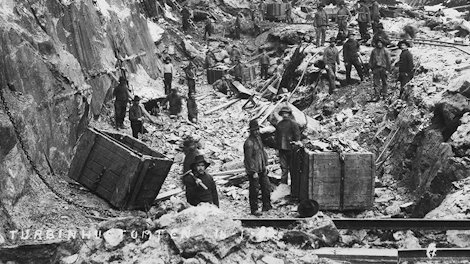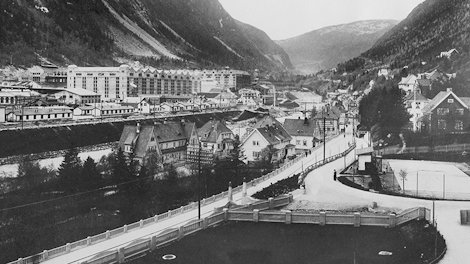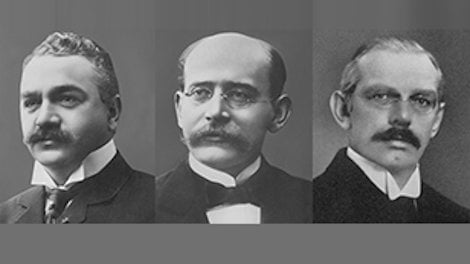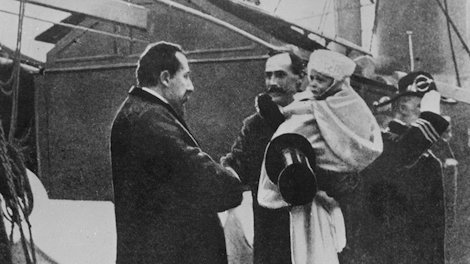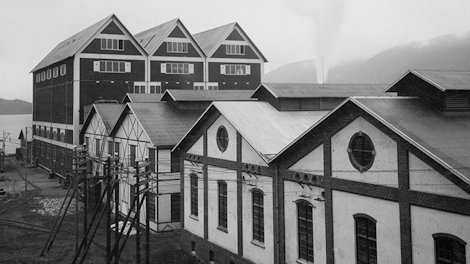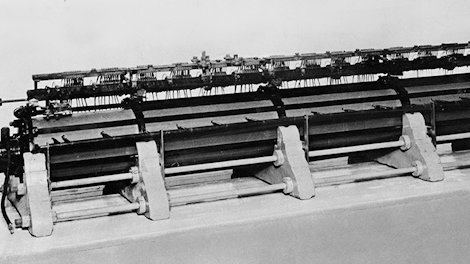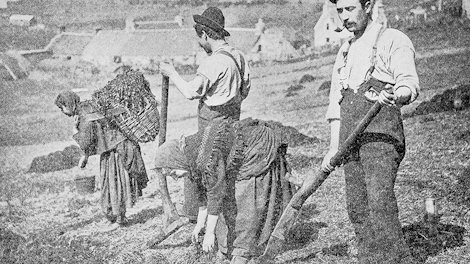The country was hungry not only for renewal and impulses, but also for symbols of new and better times ahead. The work towards the establishment of Hydro had been progressing for around two and a half years. The fact that Hydro was founded the week after Danish Prince Carl was crowned as the king of Norway (Haakon VI) may have been a coincidence, but the connection between Hydro and the new nation has since been drawn many times.
Hydro gained a name as an important employer and brought development to places where time has stood still. ”Notodden is one of the few places in Norway, where you can feel that the country is developing and has joined the restless epoch of big industry at work in all the great nations of the world. And yet the developments at Notodden will be small compared with the plants to be built around Rjukan”,writes the Norwegian daily newspaper Aftenposten on 9 June 1909. This shows the extent to which the spirit of the times and the belief in the future were linked to Hydro.
”From the first, Norsk Hydro symbolized Norway’s belief that it could count on its own forces in the industrialization of the country. The company engaged many of the country’s foremost scientists and engineers. A whole generation of engineers saw themselves reflected in the glory of Birkeland’s and Eyde’s electric arc furnace,” writes Ketil Gjølme Andersen in the book ”Et forsøk verdt” (Worth a try) (1997)
White coal
Hydroelectric power was Norway’s ”white coal”, but had been little used for industrial purposes before the beginning of the century. The values this represented had not, therefore, been fully recognized. Hydro gained access to hydroelectric power through acquisitions and companies that Eyde had been engaged in. However many people at the time criticized him for selling assets out of the country. The criticism was at times sharp, and was a contributing factor to the new concession legislation, which set a time limit on the entitlement to utilize water resources.
”He had to bear a good deal of envy – and donkey kicks. But the day came when the donkey kicks had to stop, for Eyde had acquired 400,000 horses that kicked back”.
Mayor J.O. Bryn of Tinn municipality in Southern Norway at the unveiling ceremony of the Eyde statue at Rjukan on 17 October 1920.
Hydroelectric power is a renewable resource. It has given Hydro an advantage throughout the 20th century, and continues to play an important role today.
Fertilizer from the air – a little bit of Norway
Hydro’s first and most important product, mineral fertilizer, attracted attention from the rest of the world, but far more important was the fact that this gave farmers the means of increasing their harvests and fostered optimism; not only in Norway, but in many other countries too.
As early as August 1906, Aftenposten reported that the products from the Notodden nitric acid factories drew considerable attention at the agricultural exhibition at Odense in Denmark: ”The Danish farmers recognized immediately that this was an important day for Danish agriculture. The royal visitors also spend some time at the exhibition’s ”Little Norway”, and expressed great admiration for this genial invention”.
It was of course necessary to build confidence in the new products, and this was soon achieved: The calcium nitrate produced at the Notodden factories is called ”Norwegian nitrate” in Germany to distinguish it from other types of calcium nitrate, which contain various levels of impurities, and some of which have injurious contents. Norwegian nitrate receives the highest acclaim in German periodicals,” reports a local newspaper on 8 January 1908.
“The cultivation consultant from the Farmers’ Association has analyzed the product and reports that it contains 11.795 per cent nitrogen, 11.649 per cent of which as nitric acid. Furthermore the consultant relates that the study has produced very favorable results,” writes a local newspaper on 8 August 1905.
Nutrition ensured!
Nitrogen nutrition for plants and hence people and animals is ensured for all times through this experiment. There is no progress that agriculture is unable to make as long as there are extensive sources of phosphoric acid, potassium and nitrogen.” The French scientist Grandeau in Le Temps, 6 January 1906.
”Samples of the product have been made available for several farmers in the county. The fertilizer has been used on both meadows and fields with the results exceeding even the most daring expectations. If the fertilizer can now be produced cheaply enough, this enterprise will bring about immeasurable progress in our agriculture, and will also make farming new land much easier,” reports Aftenposten on 20 July 1905.
Updated: May 15, 2024

